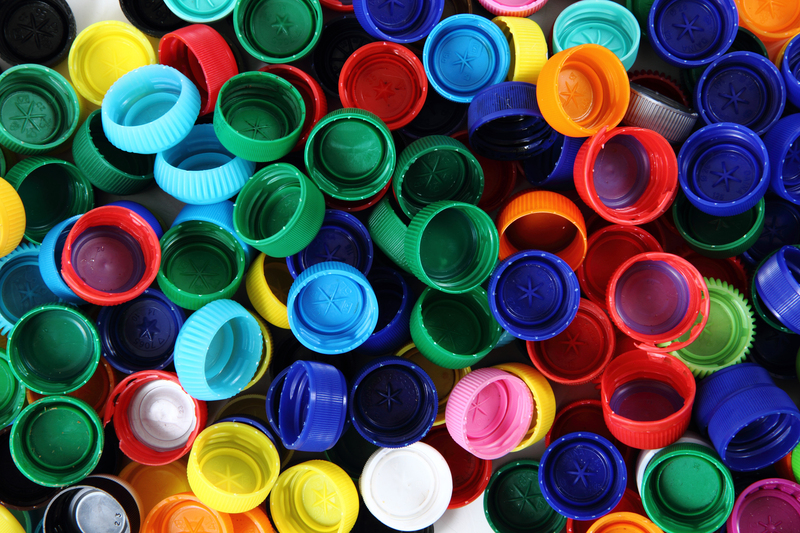Simple Steps to Safely Get Rid of Used PPE
Personal Protective Equipment (PPE) has become a vital part of our daily lives, especially since the COVID-19 pandemic. While PPE such as masks, gloves, face shields, and gowns are crucial for our protection, it's equally important to know how to dispose of used PPE safely and efficiently. Improper disposal can pose health risks and harm the environment. In this comprehensive guide, you'll learn simple steps to safely get rid of used PPE, understand why correct PPE disposal matters, and discover eco-friendly alternatives for minimizing waste.
Why Proper Disposal of Used PPE is Essential
PPE like masks and gloves are sometimes contaminated after use. If not disposed of responsibly, they can spread germs, endanger waste management workers, and pollute the environment. Properly throwing away used PPE keeps communities safe and reduces the ecological impact of increased plastic waste.
- Protects public health: Prevents the spread of viruses and bacteria.
- Keeps workers safe: Reduces risk for cleaners, garbage collectors, and recyclers.
- Prevents environmental pollution: Stops PPE from littering streets, waterways, and landfills.

What is Considered Used PPE?
Used PPE refers to any protective gear that has already been worn and is ready for disposal. Common items include:
- Masks (surgical, N95, cloth masks)
- Gloves (latex, nitrile, vinyl)
- Face shields and goggles
- Disposable coveralls and gowns
- Shoe covers and hairnets
Before you start the disposal process, always assume used PPE is contaminated, even if it seems clean.
Simple Steps to Safely Dispose of Used PPE
Disposing of used PPE safely is simple, but it must be done correctly. Here's a step-by-step guide to get rid of used personal protective equipment responsibly:
1. Remove PPE Carefully
- Wash your hands with soap and water, or use hand sanitizer before removing your PPE.
- Take off gloves first by turning them inside out as you pull them off.
- Remove your mask or face covering by handling only the elastic ear loops or straps. Avoid touching the front surface.
- If wearing other types of PPE (like gowns or face shields), remove them as instructed by health authorities, minimizing contact with potentially contaminated surfaces.
2. Place Used PPE in a Dedicated Waste Bag
- Have a specific trash bag or lined waste bin just for PPE disposal.
- Do not throw used PPE into recycling bins. Most of it is not recyclable.
- If possible, use a double-bagging method: place used PPE in one bag, tie it securely, then put it inside another bag before disposal.
- Seal the bag tightly to prevent leaks or exposure.
3. Secure and Label the Waste Bag (If Required)
- In healthcare or workplace settings, label the bag as "PPE Waste" or "Potentially Contaminated".
- For home or public places, tie the bag securely, and keep it separate from regular trash until disposal.
4. Dispose of the Bag with General Waste
- Dispose of the sealed bag in your regular household trash--not in recycling containers.
- Put the bag in your outdoor trash bin, not on the street or in open bins.
- In areas with dedicated PPE bins, use those instead.
5. Clean and Disinfect Surfaces
- After throwing away used PPE, disinfect any surfaces the items may have touched.
- Regular hot, soapy water is effective for most surfaces; use disinfectant wipes or sprays for extra protection.
6. Wash Your Hands Thoroughly
- Immediately wash your hands with soap and warm water for at least 20 seconds once you're done.
- If soap and water aren't available, use a hand sanitizer with at least 60% alcohol.
PPE Disposal Tips for Households
The best way to manage used PPE at home is to minimize contamination and prevent landfill overflow.
- Never flush PPE items (especially masks and gloves) down toilets or sinks--they can clog plumbing and cause pollution.
- Keep used PPE away from pets and children while awaiting disposal.
- Consider using a small, pedal-operated trash bin in bathrooms or entrances as a dedicated PPE bin.
- Try to reduce single-use PPE by using washable cloth masks and reusable face shields when appropriate.
Safe Disposal of PPE in Public Areas
When you need to get rid of used PPE while out and about:
- Use designated PPE disposal bins if available.
- If there are no PPE bins, place used masks or gloves in a sealed bag before throwing them in a public trash receptacle.
- If you cannot find a trash bin, take the used PPE home for proper disposal rather than littering.
How Do Institutions and Workplaces Dispose of PPE?
Organizations often generate larger volumes of PPE waste. To manage and safely dispose of used PPE, institutions should follow local guidelines, which usually involve the following practices:
1. Use Clearly Marked Bins
Place labelled PPE bins in entryways, staff rooms, and other relevant areas. Line all bins with heavy-duty bags.
2. Employee Training
Provide staff with easy-to-follow instructions and regular reminders about the correct way to throw away used masks, gloves, and other items.
3. Scheduled Waste Removal
Arrange for regular collection and disposal of PPE waste through certified waste management services, particularly for waste from clinics, laboratories, or high-risk areas.
4. Monitoring and Documentation
In medical or research settings, keep logs of PPE waste generation and removal to ensure compliance with regulations.
Common Mistakes in PPE Disposal (And How to Avoid Them)
- Do not recycle used PPE unless it's clearly labeled as recyclable and accepted by local recycling guidelines.
- Don't leave used PPE in open-air bins, parks, or sidewalks where it can become litter.
- Never burn PPE waste at home--burning plastics releases toxic fumes hazardous to health and the environment.
- Never try to wash or reuse single-use PPE (like disposable gloves or surgical masks).
Environmental Impact of Used PPE
Single-use PPE is largely made of synthetic plastics like polypropylene, which takes centuries to break down. In recent years, increased use of PPE has led to spikes in litter and ocean pollution. Birds, marine animals, and fish often mistake masks and gloves for food or get tangled in them, leading to injury or death.
You can help reduce the environmental impact by following these guidelines:
- Use reusable PPE where suitable (washable masks and gowns).
- Encourage your workplace to set up responsible waste management programs.
- Participate in community clean-ups and raise awareness about the importance of keeping used PPE out of natural areas.
Eco-Friendly Alternatives for PPE Disposal
As environmental concerns increase, organizations are working on safer alternatives for PPE disposal. Here are some green options:
Biodegradable PPE Products
- Some manufacturers now produce masks and gloves from materials that break down naturally. If available in your area, choose biodegradable PPE, which is less harmful to the planet.
PPE Recycling Programs
- Specialized PPE recycling initiatives have emerged in some cities. Companies collect, sanitize, and process certain types of PPE (like masks and face shields) for recycling. Check with your local municipality or search for 'PPE recycling near me'.
Upgrade to Reusables Where Possible
- Swap out single-use masks for reusable cloth alternatives (wash them after each use).
- Use washable gowns and face shields instead of disposables if your setting allows.
Participate in Take-Back Schemes
- Some pharmacies, hospitals, or businesses offer take-back containers for used PPE. When dropping off used PPE, follow the signs and instructions.
PPE Disposal Laws and Guidelines
Local rules for PPE disposal can vary. Always check your community or country's website for the latest guidance. For most household and general business settings, used PPE should go in the general waste, not recycling. Some regions require special handling for medical or heavily contaminated waste. Improper disposal may result in fines or health hazards.
FAQs About Disposing of Used PPE
- Can I recycle my used mask?
No. Most single-use masks and gloves are not recyclable through normal curbside programs. Specialist PPE recycling programs may accept them - check locally. - Is it safe to throw PPE in my home trash?
Yes, as long as you seal it in a bag to protect sanitation workers. - What should I do if I see littered PPE?
Pick up with gloves or tongs, place in a sealed bag, and dispose in the general waste. Wash hands afterwards. - Are reusable masks better?
For most low-risk, day-to-day situations, reusable, washable masks are an eco-friendly and effective option. Always follow local health guidelines.

Summary: The Key Steps to Safely Dispose of Used PPE
- Take off PPE carefully without touching potentially contaminated surfaces.
- Place PPE in a dedicated, lined bin or bag, and seal it securely.
- Do not recycle single-use PPE unless part of a special program.
- Dispose with general waste--use outdoor bins and do not litter.
- Wash your hands after handling used PPE or waste bags.
- Explore reusables and biodegradable PPE to reduce your ecological footprint.
Conclusion: Help Keep Your Community Safe and Clean
By following these simple steps to safely get rid of used PPE, you're not only protecting your health and that of your loved ones, but you're also making a meaningful difference for sanitation workers, wildlife, and our planet. Spread awareness, encourage best practices in your workplace, and choose reusable or biodegradable PPE whenever possible. Safe PPE disposal is a shared responsibility--and together, we can keep our communities clean and safe for everyone.
